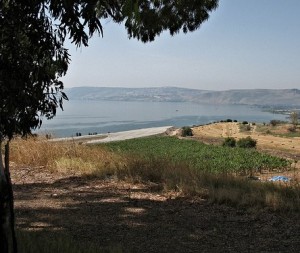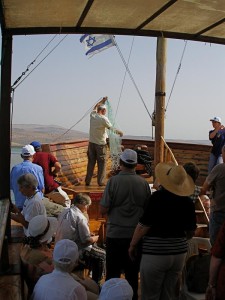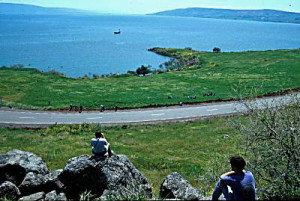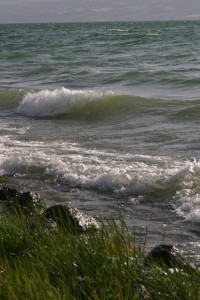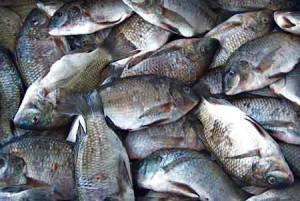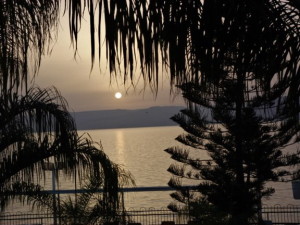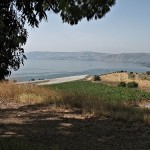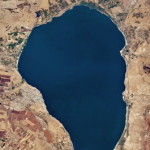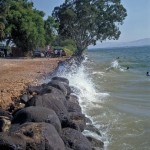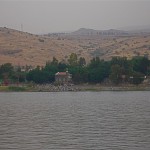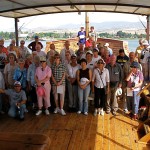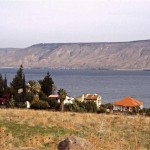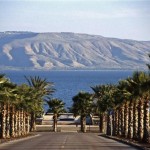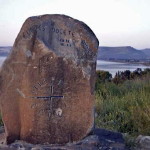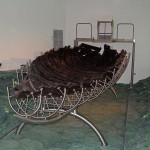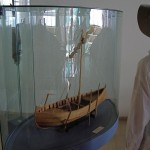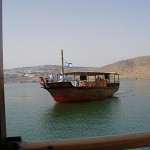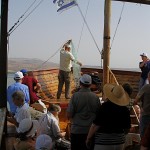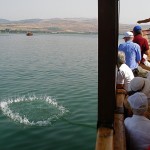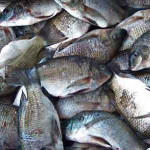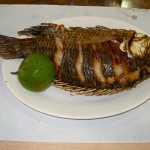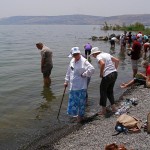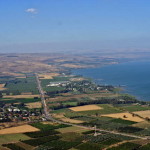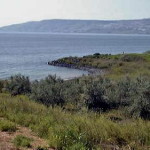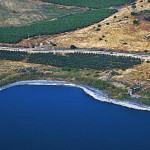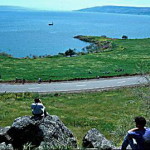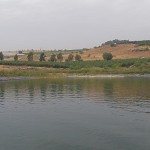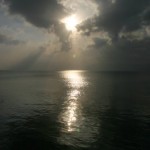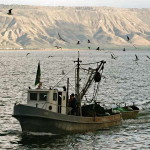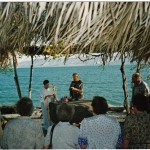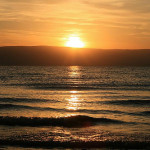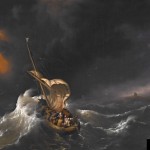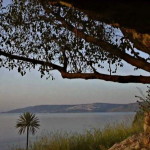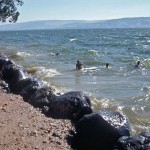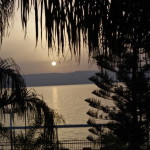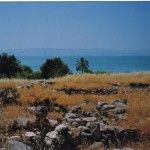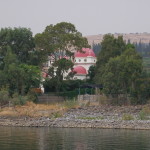Israel
Among Holy Land sites, the Sea of Galilee has changed comparatively little since Jesus walked on its shores and recruited four fishermen as his first disciples.
A picturesque, heart-shaped lake set among hills in northern Israel, it is one of the lowest-lying bodies of water on earth (some 210 metres below sea level).
This freshwater “sea” is 21km long and 13km across at its widest point, with a maximum depth of 43 metres. Its other names include the Sea of Tiberias, the Lake of Gennesaret and (in Hebrew) Lake Chinnereth or Kinneret.
Fed mainly by the Jordan River and drained by it, the lake has served as Israel’s chief water reservoir, but its usefulness has been limited by a falling water level.
In modern times tourism has become the major local industry. In Jesus’ time it was fishing, with 230 boats regularly working the lake and their catch dried and exported all over the Roman world.
Jesus made the fishing town of Capernaum the centre of his itinerant ministry in Galilee, using the lake, its boats and its shores to spread his Good News. He calmed a storm, he walked on the water and probably even swam in the lake.
Miracles on the shore
It was around the usually serene waters of the Sea of Galilee that Jesus began his public ministry, teaching in the synagogues and curing the sick. Crowds flocked to him, “for he taught as one having authority, and not as their scribes” (Matthew 7:29).
Perhaps his best-known discourse, the Sermon on the Mount, is believed to have been delivered on the Mount of Beatitudes (also known as Mount Eremos). This small hill is on the lake’s northwestern shore, between Capernaum and Tabgha.
Tabgha is also the traditional site where Jesus fed a crowd of 5000 with five loaves and two fish. Later, across the lake near Kursi, he performed a second miraculous feeding.
The Heptapegon (“Seven Springs”) fishing ground off Tabgha was also the scene of a memorable post-Resurrection appearance.
The apostles had fished all night with empty nets. Just after daybreak Jesus appeared and told them where to find a miraculous catch. When the apostles came ashore, they found the risen Lord had cooked breakfast for them.
Acoustics aided parable
About 1km northeast of Tabgha is a small bay with exceptional acoustic qualities. Here it is believed Jesus taught the Parable of the Sower (Mark 4:1-9) from a boat moored in the bay.
The semicircular bay, at the foot of the Mount of Beatitudes, is one of the most attractive places along the shoreline. It is called Sower’s Cove or the Bay of the Parables.
The slope of the hill forms a natural amphitheatre, rather like a Roman theatre. Acoustical research has demonstrated that as many as 7000 people could hear a person speaking from a boat in the bay.
Pilgrims who test the acoustics, usually by reading the Gospel account, are amazed at how far the voice carries.
This location was also an appropriate setting for the story of the sower and his seeds. There is fertile black earth, rocky ground and plenty of thorns and thistles.
Sudden squalls are common
Because it lies low in the Great Rift Valley, surrounded by hills, the Sea of Galilee is prone to sudden turbulence. Storms of the kind that Jesus calmed (Mark 4:35-41) are a well-known hazard for Galilee fishermen.
With little warning, mighty squalls can sweep down the wadis (valleys) around the lake, whipping its tranquil surface into treacherous waves.
Such storms often arrive in mid-afternoon, as the heat of the rift valley (averaging mid-30s Celsius in the shade) sucks down the cool air of the heights.
After half an hour, the wind drops and the waves subside, restoring calm to the lake.
In 1986, during a severe drought when the water level dropped, the remains of an ancient fishing boat were found in the lakebed. It was old enough to have been on the water in the time of Jesus and his disciples. Dubbed the Jesus Boat, it is now on permanent display at the lakeside Kibbutz Ginosar.
A fish with a coin in its mouth
Modern times have still seen fishermen standing in the shallow waters near the shores of the Sea of Galilee, casting their nets in the traditional manner, with others setting off in boats at sunset to fish through the night. Because of falling fish stocks, the Israel government was to impose a two-year ban on fishing from March 2011, but this was reduced to a four-month annual ban (April 15 to August 15).
Of the 27 species of fish in the lake, the best-known is nicknamed St Peter’s Fish. This species (Sarotherodon galilaeus galilaeus) belongs to the genus tilapia. Its Arabic name of musht (comb) refers to its comb-like tail.
The nickname refers to the Gospel passage in which Temple collectors ask Peter whether Jesus pays the Temple tax.
When Peter returns home, Jesus tells him to go fishing — “go to the sea and cast a hook; take the first fish that comes up; and when you open its mouth, you will find a coin; take that and give it to them for you and me”. (Matthew 17:24-27)
A peculiarity of this species of tilapia is that it is a mouthbrooder. The female holds her eggs in her mouth until they hatch; then, for a time, the immature fry swim back into her mouth when danger threatens. The fish is also known to pick up small stones or bottle tops in its mouth.
But not everyone agrees that St Peter’s Fish was a musht. Mendel Nun, an authority on the Sea of Galilee, and a veteran fisherman, says musht feed on plankton and are therefore caught by net, not hook. The fish Peter caught, he believes, was a barbel.
Even Mark Twain was impressed
The first-century Roman historian Flavius Josephus was so impressed by the beauty of the Sea of Galilee and the fertility of its setting that he wrote, “One may call this place the ambition of Nature”.
Even the satirical Mark Twain, who visited Galilee on horseback in 1867, was moved by the significance of the place. In The Innocents Abroad he wrote:
“In the starlight, Galilee has no boundaries but the broad compass of the heavens, and is a theatre meet for great events; meet for the birth of a religion able to save a world; and meet for the stately Figure appointed to stand upon its stage and proclaim its high decrees.
“But in the sunlight, one says: Is it for the deeds which were done and the words which were spoken in this little acre of rocks and sand eighteen centuries gone, that the bells are ringing to-day in the remote islands of the sea and far and wide over continents that clasp the circumference of the huge globe?”
Related sites:
In Scripture:
Jesus calls his disciples: Matthew 4:18-22; 9:9; Mark 1:16-20
The miraculous catch of fish: Luke 5:1-11
Jesus calms the storm: Mark 4:35-41; Matthew 8:23-27; Luke 8:22-25
Jesus walks on the water: Matthew 14:22-33; Mark 6:45-52
The Sermon on the Mount: Matthew 5:1-7:28
The Parable of the Sower: Mark 4:1-9
The feedings of the crowds: Matthew 14:13-21; 15:32-39; Mark 6:30-44; 8:1-9; Luke 9:10-17; John 6:1-14
Paying the Temple tax: Matthew 17:24-27
- Sea of Galilee from the Mount of Beatitudes (James Emery)
- Harp-shaped Sea of Galilee from above (NASA)
- Edge of the Sea of Galilee (© Israel Ministry of Tourism)
- Tabgha from Sea of Galilee (Seetheholyland.net)
- Pilgrim group on the Sea of Galilee (Seetheholyland.net)
- Kinneret village, the lake and Golan Heights (© Israel Ministry of Tourism)
- Sea of Galilee looking towards the Golan Heights (© Israel Ministry of Tourism)
- Monument on the Eremos hillcrest, quoting Jesus’ words “Go teach all nations” (© Don Schwager)
- Ancient fishing boat known as the Jesus Boat (Seetheholyland.net)
- Model of the Jesus Boat as it would have been (Seetheholyland.net)
- Modern equivalent of the Jesus Boat on the Sea of Galilee (Seetheholyland.net)
- Boatman demonstrates fishing technique on the Sea of Galilee (Seetheholyland.net)
- Fishing net hits the water of the Sea of Galilee (Seetheholyland.net)
- St Peter’s fish from the Sea of Galilee (© David Q. Hall)
- St Peter’s fish on the plate (Seetheholyland.net)
- Pilgrims paddle in the Sea of Galilee (Seetheholyland.net)
- Fertile land by the Sea of Galilee (David Niblack)
- Sower’s Cove or the Bay of the Parables (© Don Schwager)
- Sower’s Cove from the air (© BiblePlaces.com)
- Visitors look down on Sower’s Cove (© BiblePlaces.com)
- Sower’s Cove in 2009, with water level lower than in Jesus’ time (Seetheholyland.net)
- Moonlight over the Sea of Galilee (© Tom Callinan/Seetheholyland.net)
- Modern fishing boat on the Sea of Galilee (© David Q. Hall)
- Eucharist by the Sea of Galilee (Seetheholyland.net)
- Sea of Galilee at sunrise (Brett Wagner)
- Christ in the Storm on the Sea of Galilee, by Ludolf Bakhuysen (© Indianapolis Museum of Art)
- Sea of Galilee from the cave of Eremos (© Don Schwager)
- Swimming in the Sea of Galilee (© Israel Ministry of Tourism)
- Sunrise over the Sea of Galilee (© Tom Callinan/Seetheholyland.net)
- Wild wheat by the Sea of Galilee (Seetheholyland.net)
- Greek Orthodox church at Capernaum on the Sea of Galilee (Seetheholyland.net)
References
Ashkenazi, Eli: “Two-year fishing ban cut down to four-month annual break”, Haaretz, February 16, 2011
Charlesworth, James H.: The Millennium Guide for Pilgrims to the Holy Land (BIBAL Press, 2000)
Freeman-Grenville, G. S. P.: The Holy Land: A Pilgrim’s Guide to Israel, Jordan and the Sinai (Continuum Publishing, 1996)
Gonen, Rivka: Biblical Holy Places: An illustrated guide (Collier Macmillan, 1987)
Holmes, Oliver: “Where Jesus once preached, the holy waters are draining away” (Guardian, February 23, 2019)
Jeffay, Nathan, and Singh, Anita: “Fishing banned on the Sea of Galilee”, The Telegraph, April 3, 2010
Murphy-O’Connor, Jerome: The Holy Land: An Oxford Archaeological Guide from Earliest Times to 1700 (Oxford University Press, 2005)
Nun, Mendel: “Cast Your Net Upon the Waters: Fish and Fishermen in Jesus’ Time”, Biblical Archaeology Review, November/December 1993
Pixner, Bargil: With Jesus Through Galilee According to the Fifth Gospel (Corazin Publishing, 1992)
Walker, Peter: In the Steps of Jesus (Zondervan, 2006)
Wareham, Norman, and Gill, Jill: Every Pilgrim’s Guide to the Holy Land (Canterbury Press, 1996)
External links

